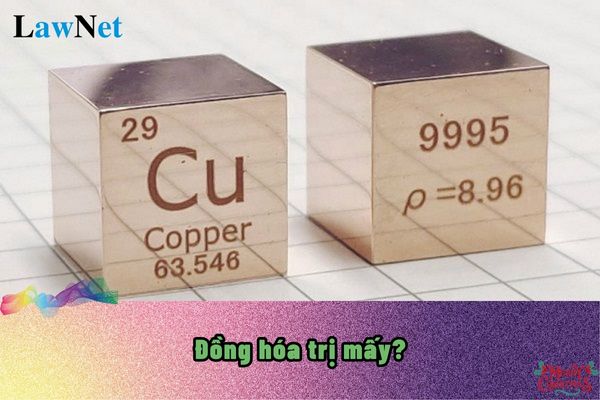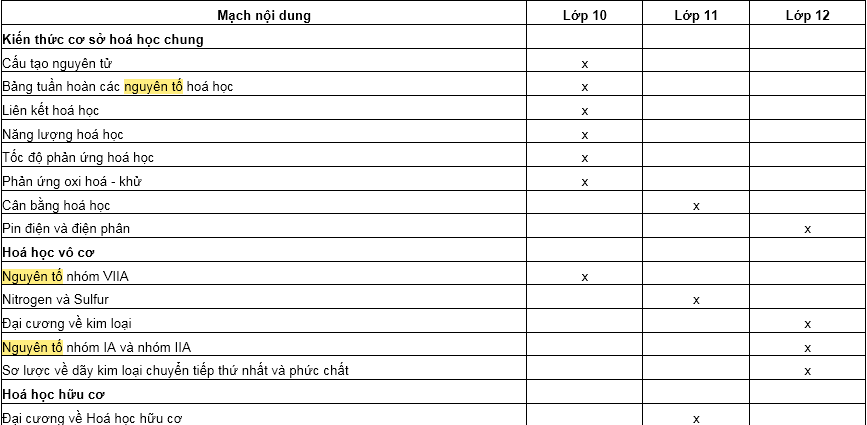What is the valency of copper (Cu)? When do students in Vietnam learn about the periodic table of elements?
What is the valency of copper (Cu)?
Let's explore the periodic table of elements to see the valency of copper:
| What is the Valency of Copper? Copper (Cu) can have two main valencies, 1 and 2. Valency 1: Less common in ordinary compounds. Valency 2: More prevalent and commonly found in copper compounds. Examples: Copper(I) oxide (Cu₂O): Here, copper has a valency of 1. Copper(II) oxide (CuO): Here, copper has a valency of 2. *Why Does Copper Have Multiple Valencies? The ability to exhibit multiple valencies is due to the electron configuration of copper atoms. The electrons in the outermost shell can participate in chemical bonding in various ways, leading to the formation of compounds with different valencies. *Note: The valency of an element can change depending on the compound it forms. In some special cases, copper may exhibit other valencies such as 3 or 4, but these are very rare. In summary: Although copper can have multiple valencies, in most ordinary compounds, copper is commonly encountered with a valency of 2. |
*Note: Information is for reference only./.

What is the valency of copper (Cu)? When do students in Vietnam learn about the periodic table of elements? (Image from the Internet)
When do students in Vietnam learn about the periodic table of elements?
Based on Section 3 of the Appendix to the General Education Curriculum for Chemistry issued together with Circular 32/2018/TT-BGDDT:
Chemical Elements
- Ability to present the concept of chemical elements, atomic number, and atomic symbol.
- Ability to state the concept of isotopes and atomic mass.
- Capability to calculate the average atomic mass (in amu) based on the atomic mass and the percentage of atoms of isotopes as provided by the mass spectrum.
- Present and compare the Rutherford-Bohr model with modern models describing the movement of electrons in an atom.
- Define the concept of atomic orbitals (AO), describe the shape of AO (s, p), number of electrons in one AO.
- Present the concept of electron shells, subshells, and the relationship regarding the number of subshells in a shell. Relate the number of AO in a subshell, in a shell.
- Write the atomic electron configuration according to shells, electron subshells, and orbital boxes when knowing the atomic number Z of the first 20 elements in the periodic table.
- Based on the characteristics of the electron configuration of the outer shell of an atom, predict the basic chemical properties (metal or non-metal) of the corresponding element.
Structure of the Periodic Table of Chemical Elements
- Explain the historical discovery of the periodic law and the periodic table of chemical elements.
- Describe the structure of the periodic table of chemical elements and explain related concepts (box, period, group).
- State the principles of the arrangement in the periodic table of chemical elements (based on electron configuration).
- Classify elements (based on electron configuration: s, p, d, f elements; based on chemical properties: metals, non-metals, noble gases).

Thus, the study of elements, including the element Copper (Cu), will be part of the high school Chemistry curriculum (from grades 10 to 12).
What are the characteristics of the Chemistry subject in vietnam?
Based on Section 1 of the General Education Program for Chemistry, issued together with Circular 32/2018/TT-BGDDT:
- Chemistry is a science of natural sciences, studying the composition, structure, properties, and transformations of elements and compounds.
- Chemistry closely combines theory and experiment, being the bridge to other natural sciences such as physics, biology, medicine, and geology. Advances in chemistry coincide with the development of new discoveries in fields related to biology, medicine, and physics.
- Chemistry plays an important role in life and production, contributing to socio-economic development. Chemical achievements are applied in material industries, energy, pharmaceuticals, biotechnology, agriculture, forestry, fisheries, and many other fields.
- In the general education curriculum, Chemistry is a subject within the group of natural sciences at the upper secondary school level, chosen by students based on career orientation, interests, and capabilities. Chemistry helps students gain core knowledge about chemistry and apply this knowledge in life, while also relating to various educational fields.
- Together with Mathematics, Physics, Biology, Informatics, and Technology, Chemistry contributes to promoting STEM education, a current educational trend valued by many countries worldwide.
- The Chemistry curriculum is designed into topics that ensure the reinforcement of content threads, development of knowledge and practical skills formed from the lower education level, helping students understand more deeply about the fundamental knowledge of chemistry, forming a foundation for studying, working, and researching.
- Every school year, career-oriented students requiring extensive chemistry knowledge are selected to pursue three specialized study topics fitting their aspirations and the school’s organizational conditions.
- These specialized topics aim to achieve differentiated depth, helping students enhance their knowledge and practical skills, applying learned knowledge and skills to solve real-life problems, meeting career orientation requirements.

